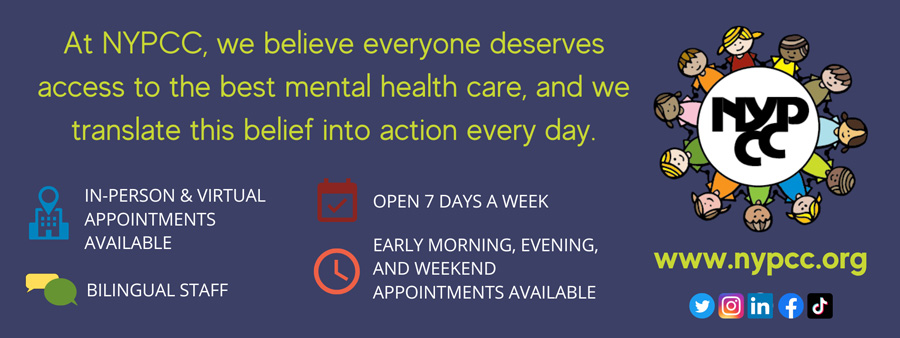“I needed to cut, the way your lungs scream for air when you swim the length of the pool underwater in one breath. It was a craving so organic it seemed to have risen from my skin itself” (Kettlewell, 2000). This striking yet genuine comment reflects how many teenagers feel when engaging in self-harm. Although this destructive behavior can be treated, it is crucial to understand the underlying emotional distress adolescents experience, the reasons behind their actions, and the practices that can reduce feelings of depression, anxiety, and low self-worth to prevent further teenage self-harm.

Understanding Self-Harm
Self-harm, also known as non-suicidal self-injury (NSSI), involves the deliberate, non-accidental injury to one’s own body tissue without suicidal intent (Favazza, 1999). This behavior often arises from unwanted emotions such as depression, anxiety, or anger, leading to an intense focus on self-injury and frequent thoughts of harming oneself. Self-harm can take various forms, including cutting, burning, scratching, hitting, or picking at the skin. It has been shown to include engaging in such behaviors on five or more days over the past year and using it to relieve unwanted feelings, resolve relationship conflicts, or create a desired emotional state (Young Minds, 2021).
Most mental health surveys completed by teenagers do not include specific questions about self-harm; however, there are mental health factors and issues that can lead to this behavior one must look out for (Adrain, 2018). These would include feelings of depression, hopelessness, and sadness for two or more weeks. In a recent study, the percentage of NYC public high school students reporting feelings of sadness or hopelessness increased from 27% in 2011 to 38% in 2021(Hamwey, 2024). Among teens identified with depressive symptoms, 48% had minimal symptoms, 27% had mild symptoms, 14% had moderate symptoms, and 11% had severe symptoms. Other risk factors include experiencing a mental health disorder, being a young person who is not under the care of their parents, or young people who have left a care home, and being part of the LGBT community (Recovery Village, 2024). It is important to remember that although these are risk factors that can make someone more likely to self-harm, having any of these does not mean someone will self-harm.
One of the most common stereotypes is that self-harm is merely ‘attention-seeking.’ This is inaccurate. Many individuals who self-harm do not disclose their struggles for a long time, and it can be extremely difficult for them to find the courage to ask for help. It is important to understand that self-harm is distinct from suicide: a person attempting suicide seeks to end all feelings, whereas a person who self-harms seeks to feel better (Favazza, 1999). Clinicians should recognize that self-harm is typically a carefully controlled behavior intended not to end life but to cope with it.
“I felt like I was isolated from the world, dead, with no emotions at all. The blood told me I was alive, that I could feel…Also I couldn’t cry, and bleeding was a different form of crying” (Strong, 1999). There is no single clear cause for self-harm. However, young people who engage in this behavior often experience overwhelming emotional pain. Some report feelings of loneliness, worthlessness, or emptiness and will do anything to alleviate these feelings, even temporarily. Others feel overstimulated, misunderstood, or fearful of close relationships. Additionally, some individuals feel overwhelmed by school and family responsibilities or seek to punish themselves for perceived wrongdoings.
Factors Contributing to Teenage Self-Harm
Adolescents experiencing intense emotions may resort to self-harm as a coping mechanism. For example, individuals who cut may not view it as an intense problem but rather as a solution to their emotional turmoil, which can be challenging for parents to comprehend. This creates a push-pull dynamic: teenagers seek to end their suffering, and self-harm provides a quick, albeit temporary, relief. Research indicates that self-harm, such as cutting, triggers the brain to release chemicals similar to opiates, reducing amygdala activity and offering a momentary escape from emotional distress. However, the rapid burst of endorphins only produces short-term effects and does not address the underlying issues (Young Minds, 2021). This behavior aligns with Freud’s pleasure principle, which posits that the mind seeks to achieve pleasure and avoid discomfort, aiming to eliminate tension and attain satisfaction (Freud, 1961).
Several factors may contribute to the development of self-harm behaviors in teenagers (Foye, 2023):
- Mental Health Issues: Teenagers struggling with mental health conditions are at a higher risk of engaging in self-harm as a maladaptive coping mechanism.
- Peer Pressure and Bullying: Social dynamics, including bullying, peer pressure, and social isolation, can significantly impact a teenager’s self-esteem and sense of belonging, driving them toward self-harm to cope with emotional pain.
- Family Dynamics: Family conflicts, dysfunctional relationships, or a lack of emotional support at home can exacerbate feelings of loneliness and alienation in teenagers, increasing their vulnerability to self-harm.
- Academic Pressure: Academic expectations and performance-related stress can overwhelm teenagers, leading to feelings of inadequacy and failure, which may trigger self-harm as a coping mechanism.
Prevention and Intervention
Teenage self-harm is a complex issue that necessitates a multifaceted approach encompassing prevention, education, support, and intervention. There is no single therapeutic method effective for all adolescents, given the diverse underlying causes of this behavior. Clinicians should aim to manage acute symptoms with behavioral therapies and/or medication, allowing teens to explore the deeper issues contributing to self-harm and offering alternative strategies to address underlying risk factors, such as trauma history, abuse, substance misuse, or family conflicts (Kilburn, 2009). Clinicians can normalize feelings of despair and encourage open communication about self-injury and relevant aspects of the teen’s life. By exploring themes of guilt and shame, clinicians can help reduce the reliance on self-harm as a primary coping mechanism. Developing alternative coping skills is essential for managing stress, regulating emotions, and building resilience.
Effective coping strategies include (Kilburn, 2009):
- Acknowledgment: Recognize and acknowledge that cutting is currently a coping mechanism. Avoid immediate attempts to eliminate it, as it serves as a defense mechanism for the adolescent.
- Grounding Techniques: Assist teens in gaining control over dissociative states through grounding techniques.
- Anxiety Reduction: Use relaxation and stress management techniques to decondition anxiety.
- Social Support: Help develop a social support network.
- Healing Process: Emphasize that healing is a gradual process of increasing awareness of environmental impacts, allowing teens to expand their perspectives and options for making choices. Encourage them to direct their own healing process.
- Patience: Understand that this process takes time and that relapses may occur.
By employing these strategies, clinicians can provide comprehensive support to teenagers struggling with self-harm.
Nearly one in four NYC teens (24%) reported needing or wanting mental health care in the past 12 months but did not receive it (Hamwey, 2024). Outpatient mental health clinics, such as the New York Psychotherapy and Counseling Center, are uniquely positioned to address these needs promptly. Trained clinicians begin with an assessment of the severity of self-harm and offer clients clinical interventions and coping skills for distress tolerance, interpersonal effectiveness, emotion regulation, problem-solving, assertiveness, mindfulness, and alternatives to teenage self-harm.
Scott Bloom, LCSW, is Director of Special Projects at New York Psychotherapy and Counseling Center. He can be reached at SBloom@nypcc.org, www.nypcc.org, or 347-352-1518.
Resources
Adrain, M, Lyon, A. Suicide and Self Harm Prevention in Schools. SAMSHA. 2018
Favazza, A. R. (1999). Self-mutilation. In D. G. Jacobs (Ed.), The Harvard Medical School Guide to Suicide Assessment and Intervention (pp. 125–145). Jossey-Bass/Wiley.
Foye, U., Chakkalackal, L., et al. The Mental Health Foundation. United Kingdom. 2023.
Freud, Sigmund, 1856-1939. Beyond the Pleasure Principle. New York: Liveright Pub. Corp., 1961.
Hamwey M, Norman C, Suss R, et al. The State of Mental Health of New Yorkers. New York City Department of Health and Mental Hygiene. May 2024.
Kettlewell, C. Skin Game: A Memoir. St. Martin’s Griffin. June 2000.
Kilburn, E. & Whitlock, J.L. (2009). Distraction techniques and alternative coping strategies. The Practical Matters Series, Cornell Research Program on Self-Injury and Recovery. Cornell University. Ithaca, NY
Strong, M. A Bright Red Scream: Self-Mutilation and the Language of Pain. Penguin Publishing Group. October 1999.
The Recovery Village. https://www.therecoveryvillage.com/mental-health/self-harm/self-harm-statistics/. 2024.
Young Minds. Self-Harm. https://www.youngminds.org.uk/parent/parents-a-z-mental-health-guide/self-harm/#Helpingyourchildwithselfharm. July 2021.





